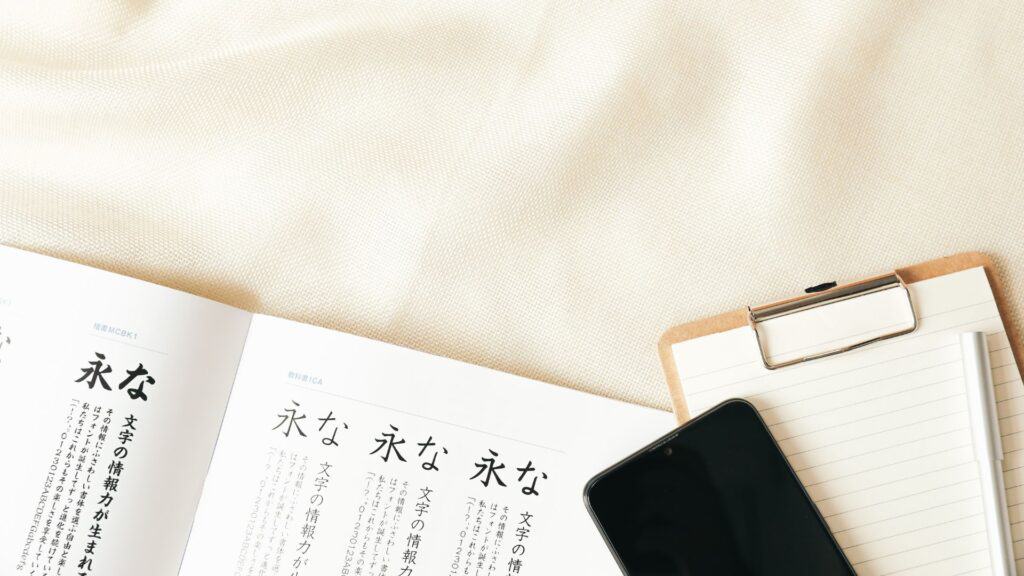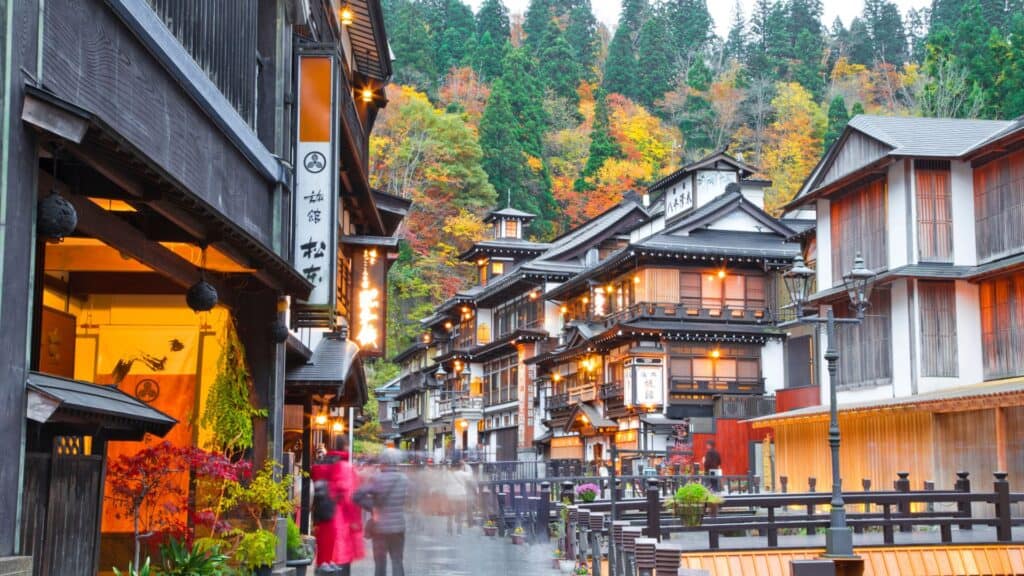Welcome to Japan, fellow travellers! If it’s your first time exploring this incredible country, we’ve got you covered. After perusing this blog, you’ll be well-prepared to embrace and respect the captivating Japanese culture.
When travelling to a new country, it’s essential to understand and respect its cultural norms. Japan is a country steeped in tradition, with customs and etiquette that may differ from what you’re accustomed to. Observing these customs not only shows respect for the local culture but also enhances your travel experience.
The dos and don’ts of Japan, often referred to as “Japan dos and don’ts,” are crucial for navigating social situations gracefully. For example, it’s customary to bow when greeting someone, rather than shaking hands. Additionally, removing your shoes before entering someone’s home or certain traditional establishments is a sign of respect. These small gestures go a long way in showing your appreciation for Japanese customs.
Furthermore, observing proper etiquette when dining is paramount in Japanese culture. For instance, slurping your noodles is not only acceptable but considered a compliment to the chef. On the other hand, sticking your chopsticks upright in a bowl of rice is considered taboo, as it resembles a funeral ritual.
By familiarising yourself with these Japan dos and don’ts, you not only avoid unintentional faux pas but also demonstrate your willingness to immerse yourself in the local culture. Japanese people are known for their hospitality and will appreciate your efforts to respect their customs.
In essence, embracing the dos and don’ts of Japan enriches your travel experience and fosters cultural understanding. So, let’s delve into these cultural nuances together, ensuring that your adventure in Japan is both enjoyable and respectful.
Japan Dos and Don’ts: 10 Must-Dos!
1. Get an IC Train Card for Stress-Free Travel

Buying an IC train card might seem like a no-brainer, but trust us, it’s a game-changer. For just 500 yen, you can snag one at any station. Set it to English at a ticket machine, and you’re good to go. Load your card with some cash, and you’ll never have to fuss over buying individual tickets or calculating fares. Swipe your card, and those gates swing open like magic. No more losing those tiny tickets – just keep the card in your wallet and breeze through Japan’s metro and train system.
2. Learn Basic Japanese Phrases

Speaking a bit of Japanese goes a long way. While many locals are eager to assist, not everyone speaks English fluently. Don’t be afraid to make mistakes; they appreciate your effort. Start with these handy phrases:
- “Sumimasen” (Excuse me/Sorry)
- “Konnichiwa” (Hello, after morning)
- “Ohayo-gozaimasu” (Good morning, in the morning)
- “Hai” (Yes) and “Iie” (No)
- “Arigato” (Thank you)
- “O-negai shimasu” (Please)
Practice these with a partner, and you’ll find it much easier to communicate and connect with locals while keeping in mind the Japan dos and don’ts.
3. Embrace the Art of Bowing

Bowing is a sign of respect in Japan, so embrace it wholeheartedly. When someone bows to you, bow back even deeper. It’s customary to keep bowing until you pass each other. Bow to everyone except children, as you don’t bow to kids when you’re older, following the Japan dos and don’ts.
4. Slurp Your Food (Without Burping!)

Here’s a fun one – slurping your noodles is not only acceptable but appreciated in Japan. It shows you’re enjoying the meal. Just remember not to burp afterward; that’s considered rude. Before eating, you can also express gratitude by saying “Itadakimasu” with your hands together in front of your chest – a sign of utmost respect. And don’t shy away from using chopsticks; the effort is highly appreciated by locals.
5. Bring a Book for Train Rides

Reading on trains and metros is perfectly normal in Japan. It’s a great way to enjoy some quiet time and blend in with the locals. Take it a step further – pick up a manga and read it on the train. People will admire your effort to immerse yourself in Japanese culture.
6. Always Have Cash on Hand

Cash is king in Japan. While many places do accept cards, you’ll encounter situations where cash is essential. ATMs are widespread, so get some yen before your day trips. A tip: withdraw 10,000 yen (around $76) per transaction for convenience. You can easily find 1,000 yen bundles at 7/11 stores for smaller transactions.
7. Wear a Mask in Crowded Spaces

Even though COVID-19 may have eased elsewhere, Japan still values mask-wearing in crowded areas. It’s a small inconvenience for a traveller and shows respect for local customs. Plus, you’ll notice that the majority of locals still wear masks.
8. Cover Up Tattoos If Possible

While younger generations are more open-minded, many older Japanese still associate tattoos with the Yakuza, the Japanese mafia. If you have tattoos, consider covering them up, especially when visiting hot springs. Some places accept tattoos, but it’s best to check ahead. You can even use “tattoo stickers” to hide them without a hitch.
9. Invest in Pocket Wi-Fi or a SIM Card

Getting around in a foreign land without internet is like navigating a maze blindfolded. Japan’s free public Wi-Fi is limited, so grab a prepaid SIM card or pocket Wi-Fi rental. You can purchase them at the airport or order in advance for pickup at your hotel. It’s a traveler’s essential tool.
10. Immerse Yourself in Japanese Culture

Experience Japan to the fullest! Take leisurely strolls through the enchanting parks, where cherry blossoms paint a picturesque scene in spring, and vibrant foliage adorns the landscape in autumn. Engage in the serene practice of shinrin-yoku, or forest bathing, amidst the tranquil groves, allowing nature’s soothing embrace to rejuvenate your spirit. And of course, unleash your inner rockstar at karaoke bars, where the spotlight beckons you to belt out your favourite tunes with unabashed enthusiasm. Whether you’re a seasoned vocalist or a tone-deaf enthusiast, the joy of karaoke transcends musical prowess, creating unforgettable memories with friends old and new.
Japan Dos and Don’ts: 12 Things You Shouldn’t Do
1. Don’t Leave Tips

In Japan, tipping is considered rude, mainly because workers are generally well-compensated by their employers. The culture places significant emphasis on hospitality and service, where providing excellent service is a matter of pride rather than expecting additional monetary compensation.
Your words of appreciation and a respectful bow hold more significance than leaving cash behind. This cultural norm fosters a sense of mutual respect between customers and service providers, contributing to the overall harmony in interactions.
2. Don’t Forget to Keep Your Phone Quiet on Public Transport

Public transport in Japan is renowned for its efficiency and punctuality, but it’s also known for its eerily quiet atmosphere. This silence is a cultural norm deeply ingrained in Japanese society, where loud conversations or disruptive noises in public spaces are frowned upon.
Even listening to music or podcasts at normal volumes through headphones can disturb fellow passengers. To adapt, many commuters switch to quiet mode on their devices, engage in reading, or simply appreciate the creative advertisements on display inside trains and stations.
3. Don’t Dress in Revealing Clothes

When it comes to dressing appropriately in Japan, modesty is key, particularly when visiting religious sites like temples. Revealing necklines or overly flashy clothing might not align with local expectations.
Opting for more modest attire not only shows respect for the cultural norms but also demonstrates a consideration for the sensitivities of the local community. Trying on a kimono, for instance, not only offers a stylish experience but also symbolizes reverence for Japanese tradition and heritage, enriching your cultural immersion.
4. Don’t walk on the Right Side of the Road

In Japan, pedestrians adhere to the custom of keeping to the left side of the road, a practice rooted in historical and practical reasons. While it might feel unfamiliar, especially for those accustomed to walking on the right, adapting to this custom ensures smooth and safe pedestrian flow.
This practice is particularly noticeable in crowded urban areas, where flexibility becomes essential. Despite initial challenges, embracing this cultural norm enhances the overall experience of navigating through bustling city streets and contributes to the sense of orderliness prevalent in Japanese society.
5. Don’t Open Taxi Doors

When taking a taxi in Japan, it’s customary to let the driver handle the doors. Taxis in Japan are equipped with automatic doors operated by the driver, and attempting to open them yourself can lead to confusion or awkward moments.
By respecting this custom, you not only avoid potential social faux pas but also facilitate a smoother and more pleasant interaction with the driver. This small gesture reflects the attention to detail and courtesy deeply ingrained in Japanese etiquette, fostering positive encounters between visitors and locals.
6. Don’t walk with shoes inside of a house

Many Japanese households maintain the tradition of using special indoor slippers to keep their homes clean. Upon entering a Japanese home, you may notice a designated area for removing outdoor shoes and switching to indoor slippers. This practice not only promotes cleanliness but also signifies a respect for the household and its inhabitants.
Additionally, when encountering Tatami mats, which are commonly used as flooring in traditional Japanese homes, it’s essential to remove shoes entirely to avoid damaging these delicate mats, showcasing consideration for cultural customs and preservation of heritage.
7. Don’t Litter

Japan is renowned for its meticulous approach to cleanliness, reflected in its pristine streets and public spaces. To uphold this standard, it’s customary to carry your trash with you until you find a suitable disposal point, such as a convenience store or designated waste bin.
By adhering to this practice, you contribute to the maintenance of cleanliness and demonstrate respect for the environment and community. Consider carrying a small plastic bag to separate your trash from personal belongings, further exemplifying your commitment to responsible waste disposal.
8. Don’t Be Late

Japanese punctuality is a cultural hallmark, with timeliness considered a sign of respect and professionalism. Arriving on time in Japan often means arriving early, reflecting a proactive and considerate approach to appointments and engagements.
When planning your travels, it’s beneficial to allocate extra time for potential delays and follow the recommendations provided by navigation tools like Google Maps, which offer valuable insights into optimal routes, train cars, and transfer timings. By prioritizing punctuality, you align with local expectations and foster smoother interactions in both social and professional settings.
9. Don’t Touch Strangers

Respecting personal space is fundamental in Japanese social interactions, where physical proximity is often kept to a minimum. Instead of initiating physical contact, it’s customary to excuse yourself and maintain a respectful distance when conversing or asking questions. This practice reflects a cultural emphasis on maintaining individual boundaries and preserving harmony in social exchanges.
By demonstrating sensitivity to personal space, you cultivate a sense of mutual respect and consideration in your interactions with others, enhancing the overall quality of communication and relationships.
10. Don’t Walk While Eating or Drinking

In Japan, the act of eating or drinking while walking is generally considered impolite or disrespectful, stemming from cultural values that prioritize mindfulness and consideration for others. Instead, take your time to enjoy snacks or beverages in designated areas such as parks, benches, or designated rest areas.
This practice not only promotes a sense of mindfulness and appreciation for food but also contributes to the cleanliness of public spaces. By adhering to this custom, you show respect for local customs and contribute to the harmonious coexistence within the community.
11. Don’t Neglect Chopstick Etiquette

Chopstick etiquette holds significant cultural importance in Japan, with specific rules governing their usage during meals. To show respect, avoid sticking chopsticks directly into a bowl of rice, as this resembles a funeral ritual and is considered taboo.
Similarly, placing chopsticks directly on the table is deemed disrespectful. Instead, rest them on top of your plate or bowl between bites, or use the chopstick rest provided if available. By observing these customs, you demonstrate an understanding and appreciation of Japanese dining etiquette, enhancing your dining experience and fostering cultural exchange.
12. Don’t J-Walk

In Japan, adherence to traffic rules is a societal norm deeply ingrained in daily life. Waiting for the light to turn green before crossing the road is not only a legal requirement but also a reflection of respect for order and safety.
This cultural practice contributes to the overall efficiency and harmony of transportation systems, ensuring smooth traffic flow and pedestrian safety. By following traffic rules conscientiously, you contribute to the collective effort to maintain orderliness and safety on Japan’s roads, promoting a positive and respectful environment for all road users.
Final Thoughts on Navigating Japan with Respect and Grace
Exploring Japan offers a rich tapestry of cultural experiences, but navigating its customs requires a delicate balance of respect and adaptation. By embracing these dos and don’ts, you not only show reverence for Japanese traditions but also foster meaningful connections with locals and fellow travellers.
Remember, the heart of Japanese etiquette lies in understanding and appreciating the nuances of its customs, from the silence of public transport to the intricacies of chopstick etiquette. So, as you embark on your journey through the Land of the Rising Sun, let these guidelines serve as your compass, guiding you towards enriching encounters and unforgettable experiences.
In essence, embracing Japanese etiquette isn’t just about following rules; it’s about embodying a spirit of harmony and consideration in every interaction. Whether it’s mastering the art of respectful bowing or savouring your favourite snack in a tranquil setting, each gesture reflects a deeper appreciation for the cultural mosaic that defines Japan.
So, as you immerse yourself in this vibrant tapestry of tradition and modernity, remember that every step you take embodies the essence of omotenashi – the spirit of selfless hospitality. And with each respectful nod and mindful gesture, you not only honour the customs of Japan but also become a part of its enduring legacy. Welcome to Japan – where every encounter is an opportunity to forge connections, foster understanding, and create lasting memories.


Recent Comments